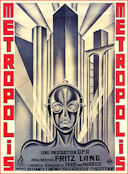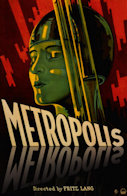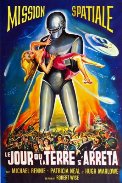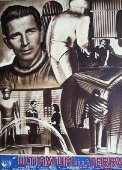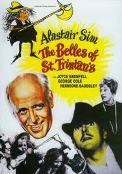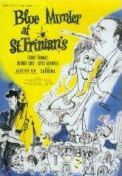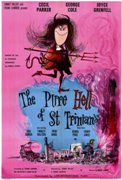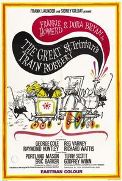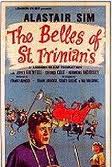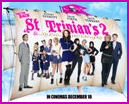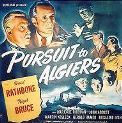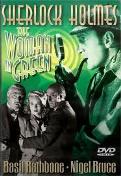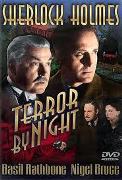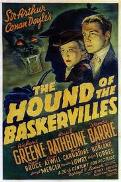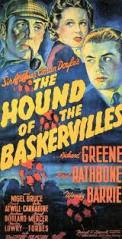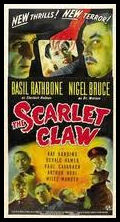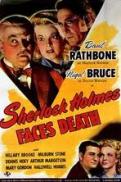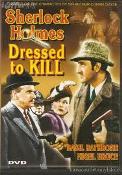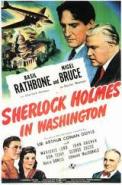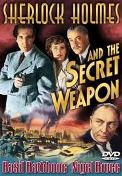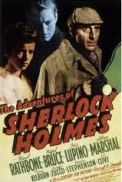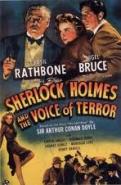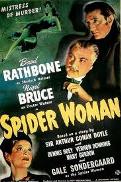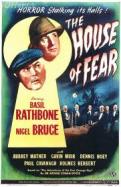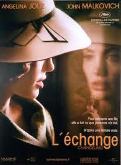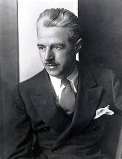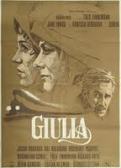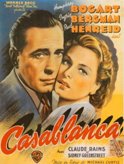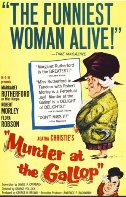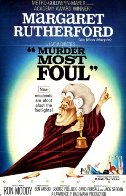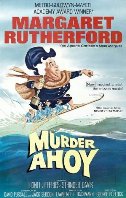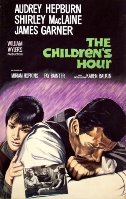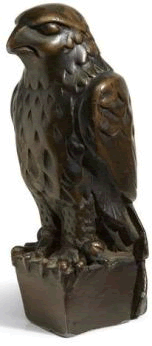Three of my all-time favourite visionary futuristic films :
'Metropolis', 'Things to Come' & 'The Day the Earth Stood Still'
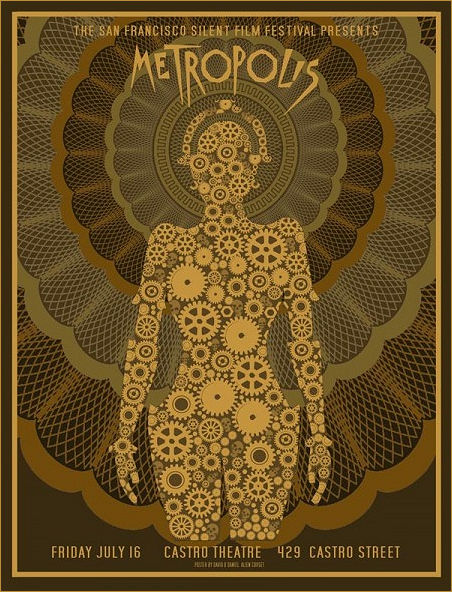
Re-imagined poster by David O'Daniel for the San Francisco Silent Film Festival 2010 - image sourced from Alien Corset
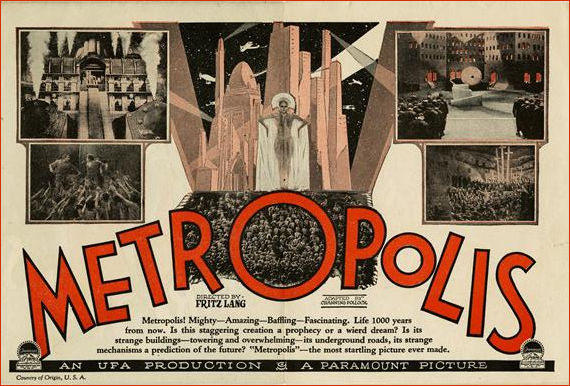
I love the colour wave on this lobby card sourced from the University of Wollongong in Australia. Follow the link for more images!
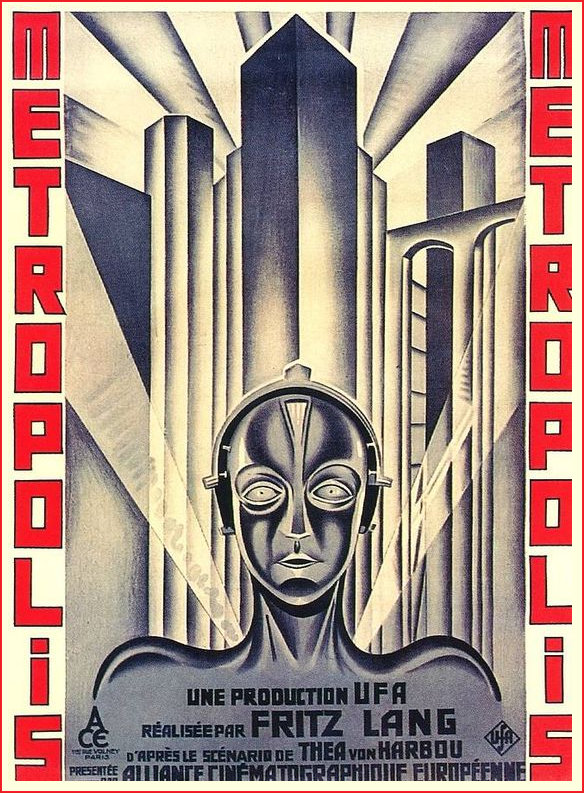
A French version variation of the film poster using the simplified colour wave - Image sourced from Pinterest
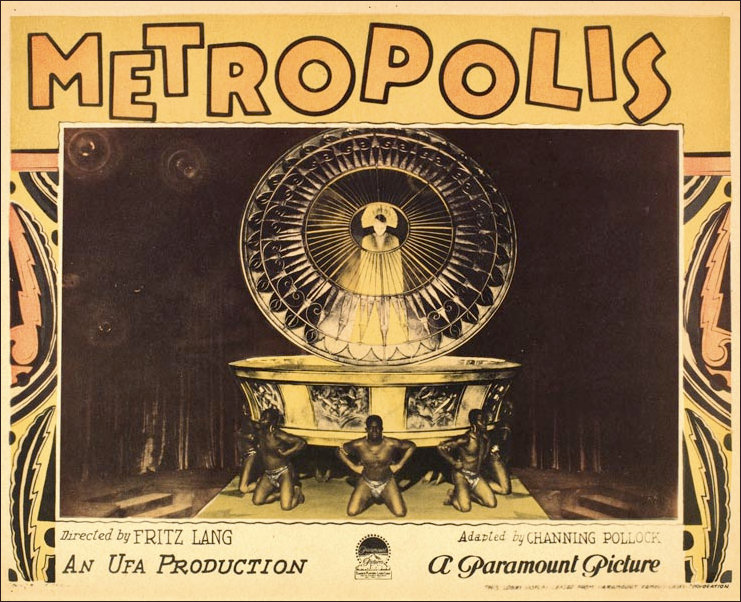
Metropolis (UFA, 1927). Lobby Card (11" X 14"). This extremely rare lobby card is a spectacular example of what most cinefiles consider the greatest science fiction film ever made and features Brigitte Helm as Maria appearing at the Yoshiwara Nightclub. "Metropolis," Fritz Lang's classic motion picture was inspired by the director's visit to New York City and dealt with social issues at the time. Image sourced from Heritage Auctions
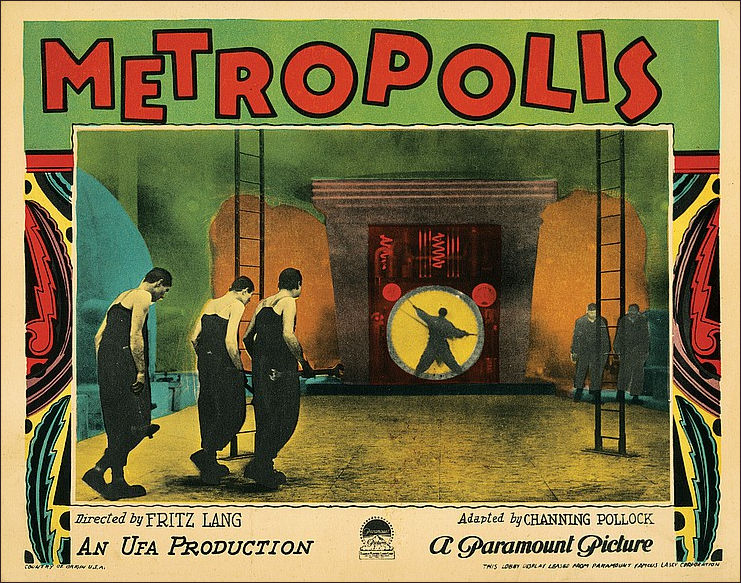
Image sourced from avclub.com
H.G. Wells Pans Fritz Lang's Metropolis in a 1927 Movie Review: It's "the Silliest Film"
When we watch Fritz Lang's Metropolis now, we see an aesthetically daring landmark work of science-fiction cinema. When H.G. Wells watched Metropolis back in 1927, the year of its release, he saw something very different indeed. "I have recently seen the silliest film," wrote the author of The War of the Worlds and The Time Machine as an opener for his New York Times review. "I do not believe it would be possible to make one sillier." Despite its giant budget, Metropolis gives "in one eddying concentration almost every possible foolishness, cliché, platitude, and muddlement about mechanical progress and progress in general, served up with a sauce of sentimentality that is all its own." History remembers Lang and Wells both as visionaries who looked, often with little optimism, to the future, but clearly they had a difference of opinion as to how that future would actually play out.
The scientifically-minded Wells took the impressionistic Metropolis literally, taking issue with — among other things — how its airplanes "show no advance on contemporary types"; its "motor cars are 1926 models or earlier"; its vision of a vertically stratified city look, "to put it mildly, highly improbable"; the apparent condition that the city's "machines are engaged quite furiously in the mass production of nothing that is ever used"; and the sentimentality of its makers, "who are all on the side of soul and love and such like."
Metropolis opened to mixed reviews at first (some of which you can read here), but no contemporary critic could match Wells for sheer disdain. "Never for a moment does one believe any of this foolish story; never for a moment is there anything amusing or convincing in its dreary series of strained events," he wrote, steering his point-by-point takedown to its conclusion. "It is immensely and strangely dull. It is not even to be laughed at." Strong stuff, but the highest form of film criticism, as the French New Wave would later articulate, is filmmaking. And so, in 1936, came Things to Come, another cinematic spectacle of the future, this one built to the ostensibly more plausible specifications Wells laid out as its screenwriter — that film itself just one more predecessor to the unending series of dystopias, utopias, and every kind of future in-between to appear on the screen over the next eight decades. Source : openculture.com
Read more : 2018 Metropolis Auction and dedicated page | 2017 Metropolis at 90 | Ninety Years on, Fritz Lang's Dystopic 'Metropolis' Still Has the Power to Unnerve
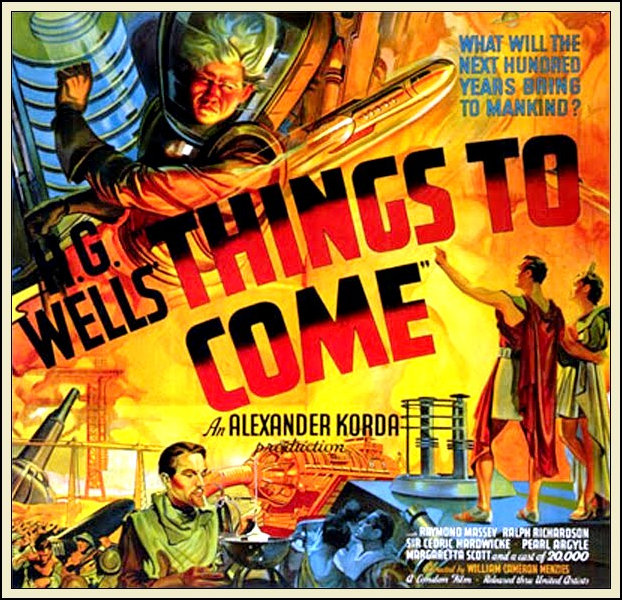
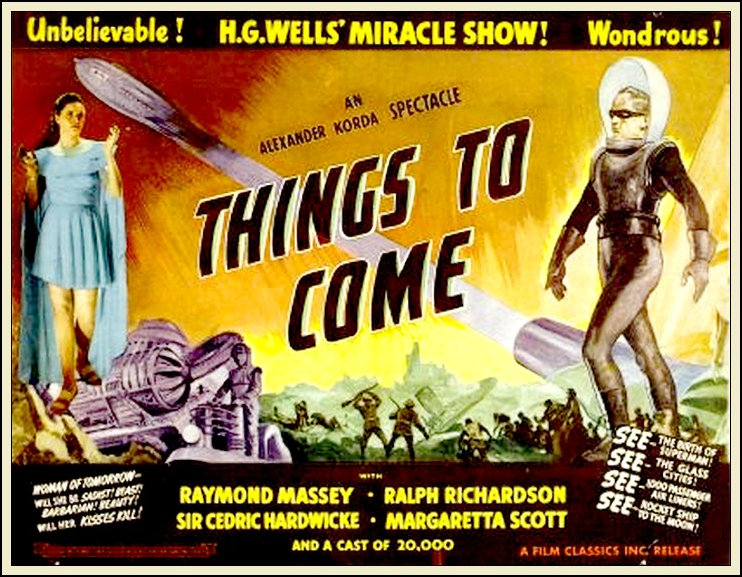
Two Posters sourced from the Project Gutenberg Australia
From the BFI - Released in 1936, Things to Come, adapted by H.G. Wells from his own 1933 science fiction novel The Shape of Things to Come, was the most ambitious production to date from Korda's London Films, and cemented its reputation for producing intelligent drama on an epic scale. Things to Come was an ambitious project with a vast scope - covering a century of future history - and a scale to match: enormous sets, particularly in the sequences set in 2036, thousands of extras, and imaginative design and editing. Several of the performances are equally impressive, notably Raymond Massey as the messianic Cabal and Ralph Richardson as the thuggish 'Boss', a role he modelled explicitly on Mussolini (the dictator's response was to ban the film outright in Italian cinemas). However the human story at times feels overshadowed by the design, with the ending, particularly, lacking impact. The film's overwhelming seriousness is a problem, although understandable given the immediate fear of war. But it still has moments of real power, including a subtle and moving scene in which an airman (John Clements) offers his gas mask to a young girl whose town he has just attacked, as well as the dazzling montage of the re-building of Everytown. Things to Come offered a very different vision of the future to Fritz Lang's classic Metropolis (Germany, 1926), to which it was inevitably compared; Wells was scathing in his criticism of Lang's film, which offered a portrait of a world enslaved by science. By contrast, Wells saw science as a promise of mankind's salvation. The design of the film presented one of the greatest challenges, particularly the representation of the fabulous Everytown of the future. Wells approached artist Fernand Léger, architect Le Corbusier and Bauhaus legend László Moholy-Nagy before finally settling on in-house talent in the form of Vincent Korda and his own son Frank Wells. Some 90 seconds of Moholy-Nagy's apparently designs made the final cut, but he is not credited. The film is certainly less glossy and shallow than much of Korda's output, but was not a great success, perhaps because the real threat of war was something people preferred not to be reminded of. Regardless, its relative failure probably confirmed Korda in his preference for lighter subjects. A second Korda/Wells association, The Man Who Could Work Miracles (d. Lothar Mendes, 1937) was notably more whimsical in tone.
Synopsis - Christmas, 1940. With Europe apparently on the brink of war, John Cabal is pessimistic about the chances for human progress. His friend 'Pippa' Passworthy is more positive - doubtful that war will come, and arguing that, in any case, war can be a force for progress. As Passworthy makes his goodbyes, however, the news comes through that the country is mobilising for war. Shortly after, Everytown is the victim of an air raid. As war continues, Cabal, now a pilot, shoots down an enemy plane. As Cabal tends to the wounded pilot, the man tells him that he has released a deadly gas. Cabal struggles to equip them both with gas masks, but when a young girl comes by, the man insists that she takes his mask. Reluctantly, Cabal abandons the man to his fate.
1966, and the war continues to rage. The world is in the grip of a virulent plague, the 'Wandering Sickness'. The remaining inhabitants of the ruined Everytown are ruled by the warlike Boss, who demands that all sufferers from the sickness are shot to prevent contagion; in this way, the disease is eventually contained. The Boss continues to lead attacks on neighbouring communities, and dreams of a return to domination of the skies. But despite the best efforts of the mechanic Gordon, flight seems a lost science, until the arrival of a black-clad stranger in an aeroplane, who identifies himself as John Cabal, representative of Wings Over the World, an organisation striving to restore civilisation through the establishment of a world government. Cabal renews contact with his old friend Dr Harding, and explains his mission. But he is arrested by the Boss, who proposes a deal if Cabal supplies him with fuel for his redundant planes. When Cabal refuses, the Boss imprisons him. Gordon, using Cabal's plane, makes his way to the headquarters of Wings Over the World, and a squadron is despatched, which rains down a 'gas of peace' over Everytown, putting all of its inhabitants to sleep.
Under Cabal's leadership, the rebuilding of civilisation begins, and mankind enters a new phase of technological and social development. By 2036, the new underground city of Everytown is complete. But its citizens do not all blindly accept the vision of progress that is being fed them, and one, an artist and sculptor, Theotocopulos, vows to oppose the relentless advance. Oswald Cabal, grandson of John and President of the Council, has proposed the next stage of scientific advance - a 'space gun' to begin the exploration of the heavens, starting with an orbit of the moon. The craft lacks only a crew for the expedition to begin. Maurice, son of Cabal's colleague Raymond Passworthy, and Cabal's own daughter Catherine volunteer. But as the preparations are being made, Theotocopulos makes an appeal to the citizens of Everytown to prevent the launch. As the people march on the gun, the Council accelerated its preparations, and despite the pleas of Maurice's father, the crew are dispatched, and the gun is fired just before the mob can reach it. As the rocket makes its way into space, Cabal expresses his vision for mankind's future. Sourced : BFI
I think these films also heavily influenced my love of the Flash Gordon and Buck Rogers Film serials, which although produced in the 1930s were still being shown in British cinemas in the 1950s which is when we first came across them. Eventually they migrated to the television screen and now happily are available on DVD.
H.G. Wells - 150th Anniversary
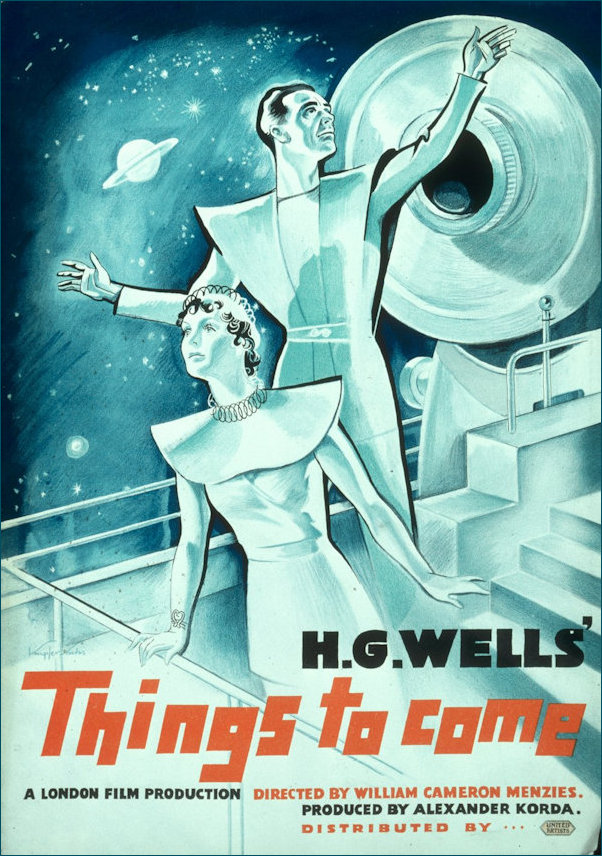
Commemorating the 150th anniversary of H.G. Wells birth the British Film Institute have chosen the "10 essential film adaptations from the godfather of sci-fi"
"The work of pioneering British sci-fi novelist H.G. Wells has been well-served by many classic film versions. A century and a half after his birth, we look back at some of the best. Herbert George Wells was born in Bromley in Kent on 21 September 1866. To mark his 150th anniversary, this top 10 reflects his status as a progressive social thinker, as well as one of the founding fathers of science fiction. Moreover, it reveals the continued prescience and relevance of a left-leaning pacifist who was not afraid to speak his mind. We’re just two decades from the time that Everytown will become a strictly regulated underground enclave and we should probably start feeling concerned, given how many other predictions in The Shape of Things to Come (1933) have come to pass. There’s a grim irony in the fact that the ‘Wings over the World’ cabal has its headquarters in the Iraqi city of Basra, as Wells (for once adapting his own text) warns of the twin evils of religion and progress. But, if some of the performances have dated, the ambition and acuity demonstrated by director William Cameron Menzies and production designer Vincent Korda remain undiminished." Source : BFI
Things to Come, the 1936 Sci-Fi Film Written by H.G. Wells, Accurately Predicts the World's Very Dark Future
"We live in interesting, exciting, and anxious times," declares the booming narration that opens the movie trailer above. Truer words were never spoken about our age — or about the mid-1930s, the times to which the narrator actually refers. But the picture itself tells a story about the future, one extending deep into the 21st century: a hundred-year saga of decades-long war, a new Dark Age, and, by the mid-2050s, a rebuilding of society as a kind of industrial Utopia run by a technocratic world government. It will surprise no one familiar with his sensibility that the screenplay for the film, Things to Come, came from the mind of H.G. Wells. Watch it in full on YouTube or Archive.org. Welles had made his name long before with imaginative novels like The Time Machine, The Island of Doctor Moreau, The Invisible Man, and The War of the Worlds (find them in our list of Free eBooks), all published in the previous century. By the time the opportunity came around to make a big-budget cinema spectacle with producer Alexander Korda and director William Cameron Menzies, conceived in part as a rebuke to Fritz Lang's Metropolis, the writer had settled into his role as a kind of "eminent fortune teller," as New York Times critic Frank Nugent described him in his review of the collaboration's final product. "Typical Wellsian conjecture," Nugent continues, "it ranges from the reasonably possible to the reasonably fantastic; but true or false, fanciful or logical, it is an absorbing, provocative and impressively staged production." It included work from not just important figures in the history of filmmaking (Menzies, for instance, invented the job of production designer) but the history of art as well, such as the Bauhaus' László Moholy-Nagy. You can watch and judge for yourself the free version of Things to Come available on YouTube or, much preferable to the cinephile, the restored and much-supplemented Criterion Collection edition, whose extras include unused footage that more fully shows Moholy-Nagy's contributions.
At the time, this much-ballyhooed spectacle-prophecy drew responses not just from movie critics, but from other eminent writers as well. In his Criterion essay "Wither Mankind?", Geoffrey O'Brien quotes those of both Jorge Luis Borges and George Orwell. "The heaven of Wells and Alexander Korda, like that of so many other eschatologists and set designers, is not much different than their hell, though even less charming," Borges complained of the envisioned near-perfection of its distant future. Wells, like many 19th-century visionaries, instinctively associated technological progress with the moral variety, but Borges saw a different situation in the present, when "the power of almost all tyrants arises from their control of technology." Things to Come has, however, received retrospective credit for predicting global war just ahead. In its first act, the London-like Everytown suffers an aerial bombing raid which sets the whole civilization-destroying conflict in motion. Not long after the real Blitz came, Orwell looked back at the film and wrote, ominously, that "much of what Wells has imagined and worked for is physically there in Nazi Germany. The order, the planning, the State encouragement of science, the steel, the concrete, the airplanes, are all there, but all in the service of ideas appropriate to the Stone Age." Or, in Nugent's chilling words of 1936, "There's nothing we can do now but sit back and wait for the holocaust. If Mr. Wells is right, we are in for an interesting century." Source : openculture.com
'The Day the Earth Stood Still'
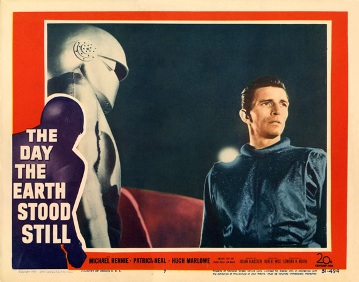
Gort the Robot (Lock Martin) and Klaatu as played by Michael Rennie
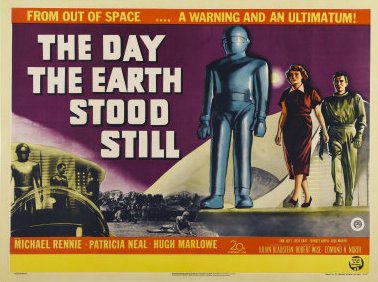
The three main characters Gort, Helen Benson (Patricial Neale) and Klaatu
A 1951 film starring Michael Rennie and Patricial Neale which had the feel of the 1930s classics and which wasn't done any justice with its 21st century remake (which will not have a place on this page - other than as part of a review written in the Radio Times). Earth was being delivered of a warning and the posters are pretty scary and not a little risqué in some of them - the females being carried by Gort (the Robot) bear no resemblance to the prim Patricial Neale!
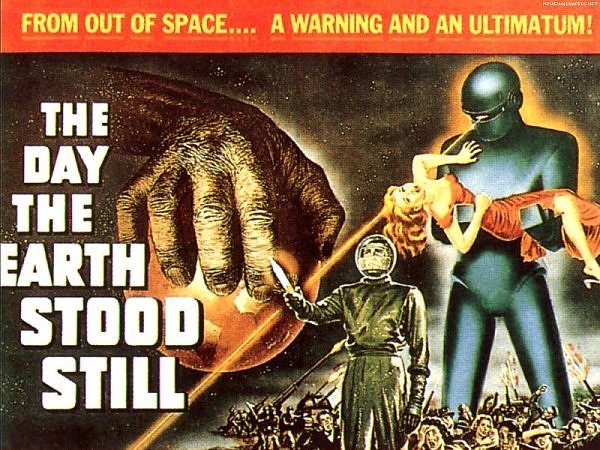
More King Kong than The Day the Earth Stood Still - monkey paws and déshabillé females.
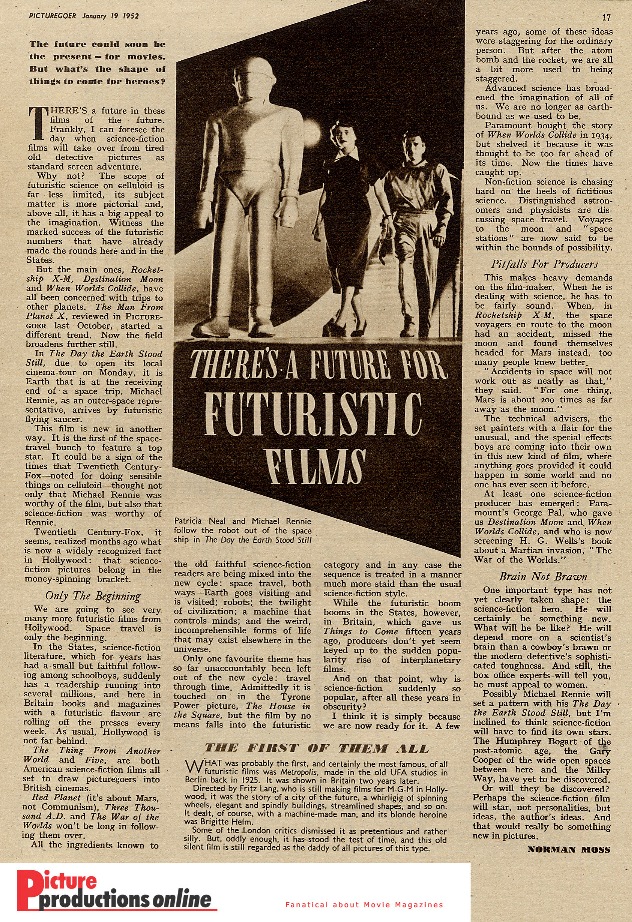
I particularly like this review for a variety of reasons. The style it is written in points to a very masculine dominance in the world of Hollywood in the 1950s (and let's not forget the McCarthy era) there are many references to the male lead or writer or even scene painter! Today this type of review would be censured so let us be happy it has survived. That isn't important other than it is a preservation of a way of life which these days is frowned upon (and look where that got us!) - But I also like the fact that it is a positively written article about a new emerging genre that I have always enjoyed and it acknowledges 'Metropolis' which is now, of course, enjoying cult status in the 21st century. I have reproduced the article for easier reading here.
I am also delighted that this article mentions 'When Worlds Collide' which was not the greatest of pictures but it was the third film of four on a 'Disaster Night' at the NFT that we attended in the late 1970s. The others were 'Krakatoa, East of Java', 'Atlantis' and washing up (the pun is intentional) with 'When the Rains Came'. I still don't know if Trevor bought the tickets on purpose or whether the Bette Davis all-nighter really had sold out but all I can and will say is that it was definitely 'A Night to Remember' and may feature in the 6 degrees section ......
From a recent Radio Times preview of the re-make: "Robert Wise's alien-invasion original, released in 1951, is an iconic entry in the canon of 1950s sci-fi, thanks in part to its muted parable of Christian redemption. Fifty-seven years on (2008), this fatuous remake ditched the Cold War/religious subtext - and even the flying saucers - in its attempt to deliver a more contemporary allegory, as spaceman Keanu Reeves arrives with a warning for humanity. It's a pointless remake that would be passable on its own terms but suffers terribly in comparison with its source material."
Flash Gordon and Buck Rogers 1930s-style
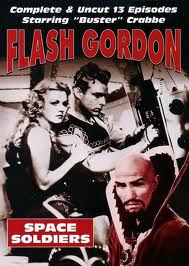
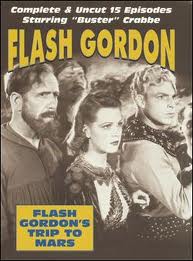
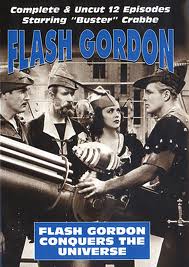
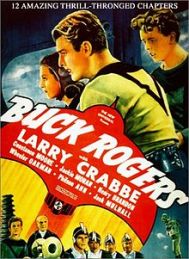
Following his successes as Olympic Swimming Champion in 1928 and 1932, Clarence Linden 'Buster' Crabbe II then moved to the world of make-believe starring in, the iconic and bringing, the best interpretation (in my humble opinion) of the Flash Gordon and Buck Rogers cartoon characters to the silver screen.
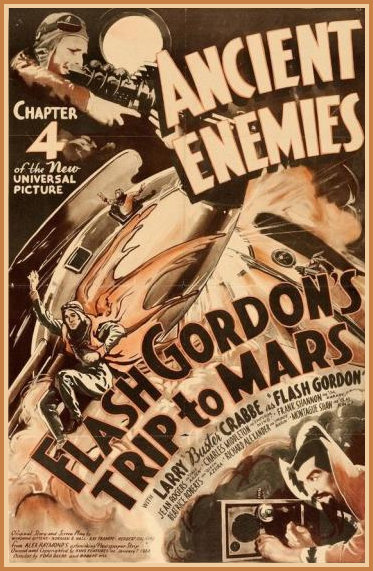
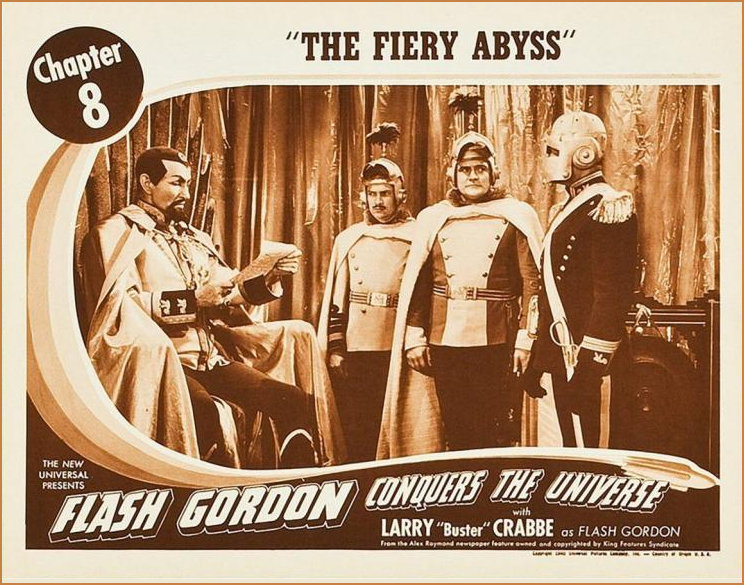
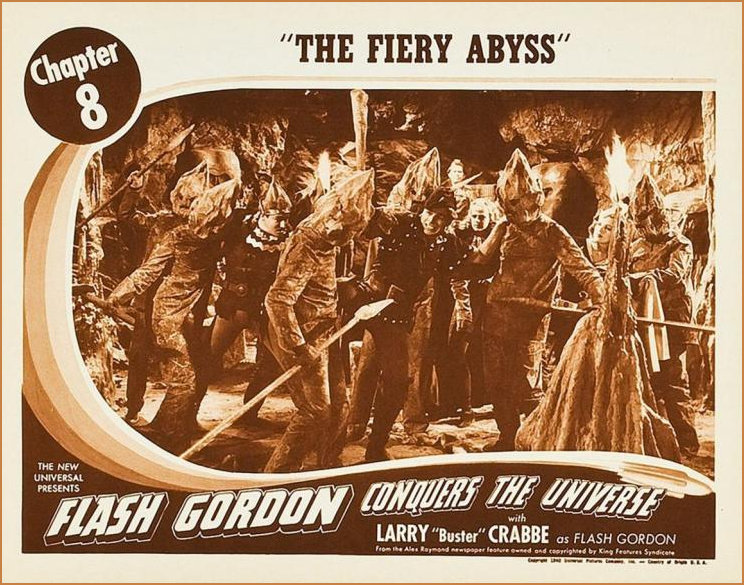
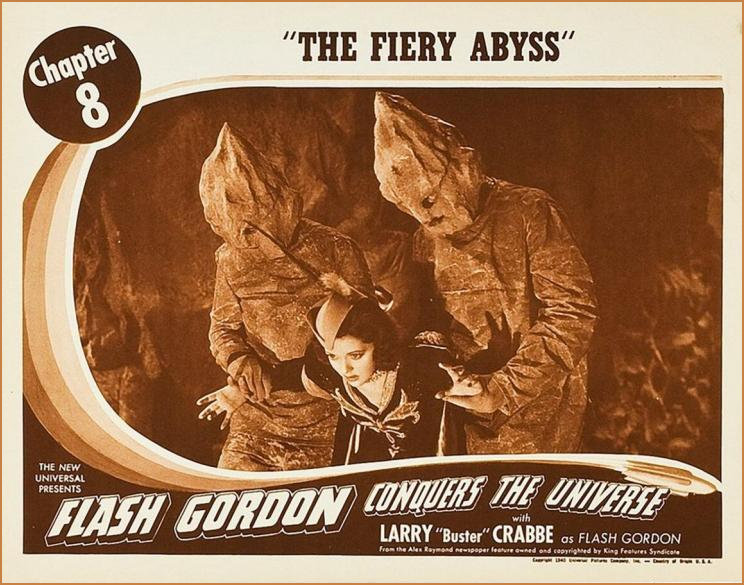
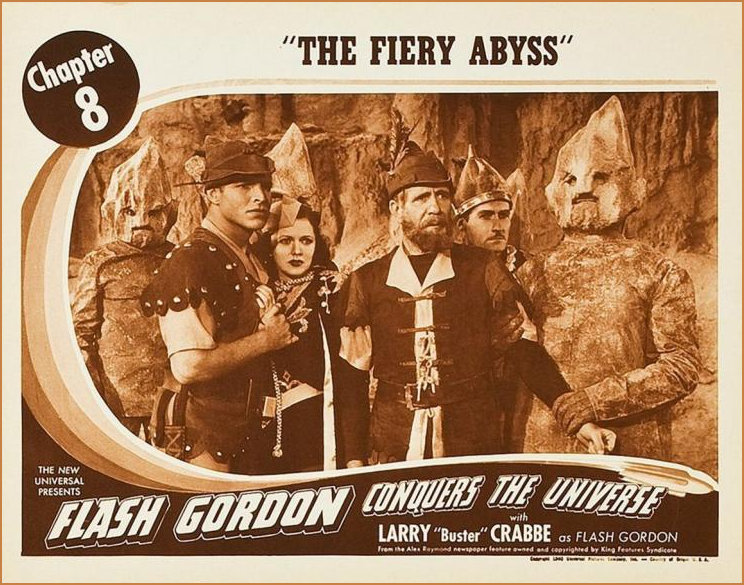
A selection Flash Gordon Lobby Cards from 'Flash Gordon's Trip to Mars' and 'Flash Gordon Conquers the Universe' sourced from luxurylaunches.com/auctions
She (Ayesha)
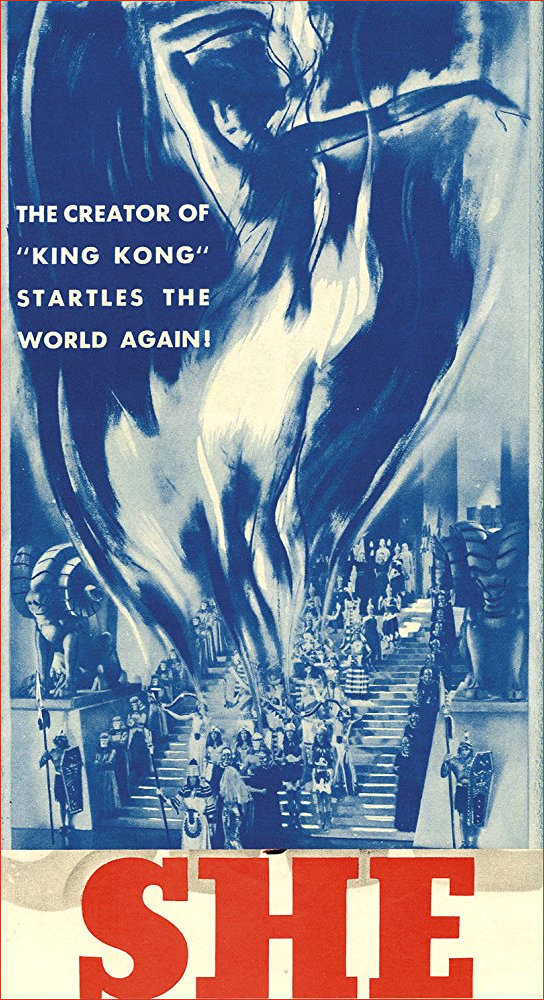
My favourite incarnation of 'Ayesha' is Helen Gahagan in the 1935 version of the film and that is why I have chosen this poster to represent the true atmosphere of the film part sci-fi, part adventure, wholly absorbing and way ahead of its time (all thanks to the magnificent writing of H Rider Haggard)
'Who must be Obeyed' written by H Rider Haggard one of my all-time favourite authors and in particular I have always loved his Ayesha saga of which there are four books. 'Wisdom's Daughter' is a sort of prequel showing the mystic side of Ayesha before she joined the mortals (prior to becoming an immortal again). 'She' begins the story we are all familiar with ending in tragedy, the sequel being 'Ayesha' the return of 'She' and completing the cycle. 'She and Allen' bring together Ayesha and Alan Quartermain- however hungry we may be for more information about these two characters - Rider Haggard must have been having a joke with us or maybe he needed a quick fix of money? However the films of 'She' are many and plentiful starting with a very early silent version in 1908 starring Florence Auer, in 1911 Marguerite Snow portrayed Ayesha, 1916 welcomed Alice Delysia into the role, Valeska Surratt played the eponymous heroine in 1917, the 1925 version gave us Betty Blythe , the 1935 version starring Helen Gahagan gave us a clone of Disney's Wicked Queen in Snow White in one scene, but other than that this is the definitive version even though it did not follow the whole story through starting it in the de Medici's time instead of Ancient Egypt. The there was a bit of a pause for 30 years when Ursula Andress portrayed Ayesha in a Hammer production and set the pulses running in many a male of the period, a sequel in 1968 (and not really based on Haggards 'Ayesha') entitled 'Vengeance of She' starred a typical 1960s starlet Olinka Berova (now known as Olga Schoberová) in the role of Ayesha looking like a clone of Ursula Andress. 1982 brought us Sandahl Bergman in the title role and finally in 2001 Ophélie Winter is seen in yet another version.
Lost Horizon
Based on the 1933 novel by James Hilton fast approaching its 90th anniversary this magical and well-loved classic is still drawing new and old admirers. Following a plane crash, Conway, a British consul; his deputy; a missionary; and an American financier find themselves in the enigmatic snow-capped mountains of uncharted Tibet. Here they discover a seemingly perfect hidden community where they are welcomed with gracious hospitality. Intrigued by its mystery, the travellers set about discovering the secret hidden at the shimmering heart of Shangri-La. Source : Amazon.co.uk (with small adjustments to take in anniversary dates)
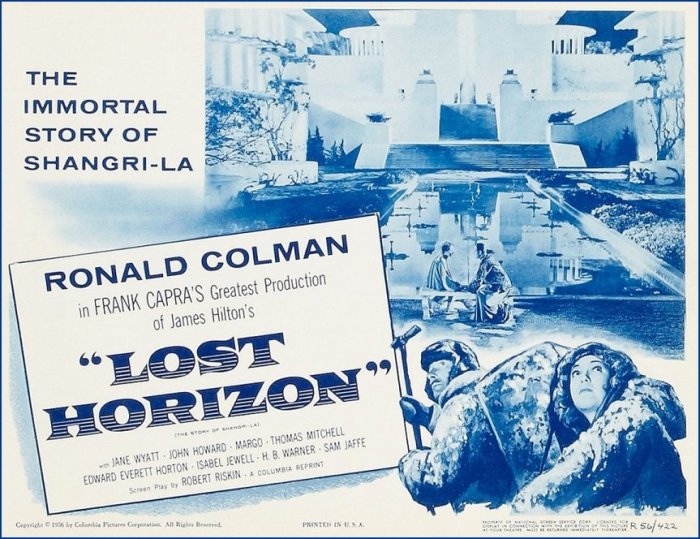
Film poster of the 1937 screen adaptation of 'The Lost Horizon' - image sourced from doctormacro.com
Brit Robert Conway is a writer, humanitarian, diplomat, and former military man, all of which have made him a public hero. But he is remarkably unfulfilled in his life, something he does not tell anyone. On March 10, 1935, he is in Baskul, China, where a violent revolution is taking place. It is his job to evacuate the ninety British subjects in the area, before he himself heads back to London to become British Foreign Secretary. He is able to complete the evacuation, with him, his overly pragmatic brother George Conway, paleontologist Alexander Lovett (a fussbudget of a man), secretive Henry Barnard (who later states why he is so secretive about himself), and terminally ill American Gloria Stone his fellow passengers on the last flight out. What they are initially unaware of is that the plane has been hijacked, and eventually crash lands high in the Himalayas, killing the hijacking pilot. But instead of what seems a probable death for them, they are rescued by a band of men who take them back to their community hidden behind the mountains, a seemingly Utopian community named Shangrila, where the overall belief is to be kind. Aging is also a seemingly unknown concept. Each of the five has different feelings about their new sanctuary, where they eventually learn they were not brought by accident. On one end of the spectrum is George, who does whatever he can to get back to civilization as he knows it, despite the probable hardship of doing so, especially since there is no means of communication in and out. He believes what they have been told are all lies and that they are being held prisoners against their will. On the other end is Bob, who believes that Shangrila is exactly what he's been looking for in life. With no proof one way or another, the five have differing views of staying in Shangrila forever or trying to make their way out. It may be not until they receive that "proof" that a definitive decision can be made, but by that time it may be too late for some. - Sourced from IMDB as written by Huggo
Basil Rathbone's 'Sherlock Holmes'
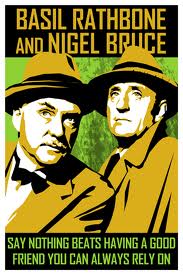
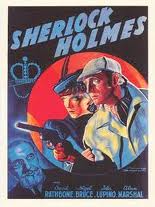
Another series of films that heavily influenced my formative viewing and which I love to this day and am delighted to have on DVD - there were 14 films made in total between the years of 1939 and 1946. Some stayed close to the writings of Arthur Conan Doyle in some of the later ones an element of war-time spying was introduced replacing Moriarty as the arch-enemy with Reich-Nazis. This also served to reinforce the great British spirit and belief in victory during the war years.
Julia
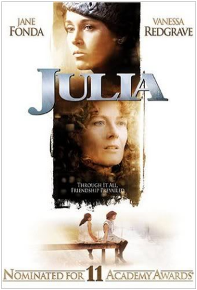
This full-length film is based on a little known semi-autobiographical short story found in the 'Pentimento' compendium. A story without a conclusion but beautifully portrayed in this version by two of my least favourite actresses - Jane Fonda and Vanessa Redgrave - but they and the film were riveting and I will admit that it is one of the most powerful films I have ever seen. Set in the period 1920s to 1940s following the friendship of the mysterious 'Julia' and the author Lillian Hellman as both grew from puberty into the 'bright young things' of that period as women started to assert themselves in the hitherto all-white male bastion. Lillian Hellman was, throughout the reminiscing of this story, in a relationship with Dashiell Hammett (look at all those double letters in his name!) who wrote 'The Maltese Falcon' which became the basis for another favourite film of mine, and who encouraged her in her writing. Hammett was played by Jason Robards, Lauren Bacall's second husband. The film conveys the sinister menace and appeal of Nazism in its early pre-war days - the adventurous Hellman did not seem to pick up on the dangers to herself, although her friend Julia, was only too aware of what was happening in Europe to the intelligentsia (of which she was a part) and the tragedy that was unfolding for anyone of Jewish origin.
The Maltese Falcon
Humphrey Bogart, Peter Lorre, Sidney Greenstreet - who could ask for anything more. Based on a novel by Dashiell Hammett

The instantly recognisable iconic movie poster of The Maltese Falcon (1941)
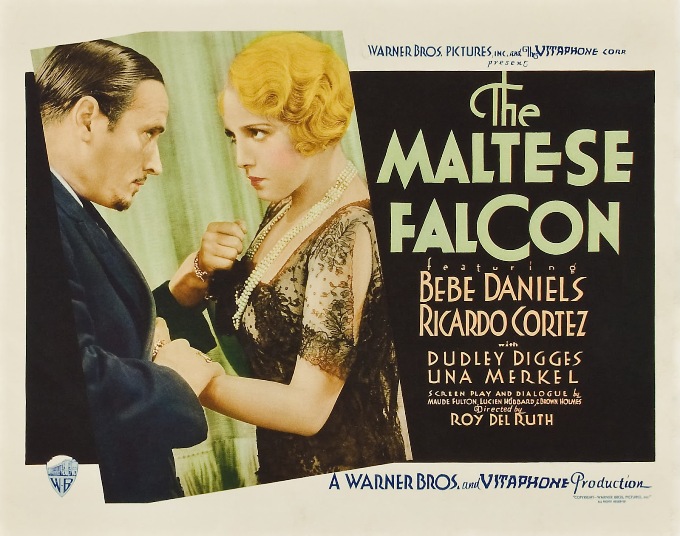
An alternative version of the film (1931)
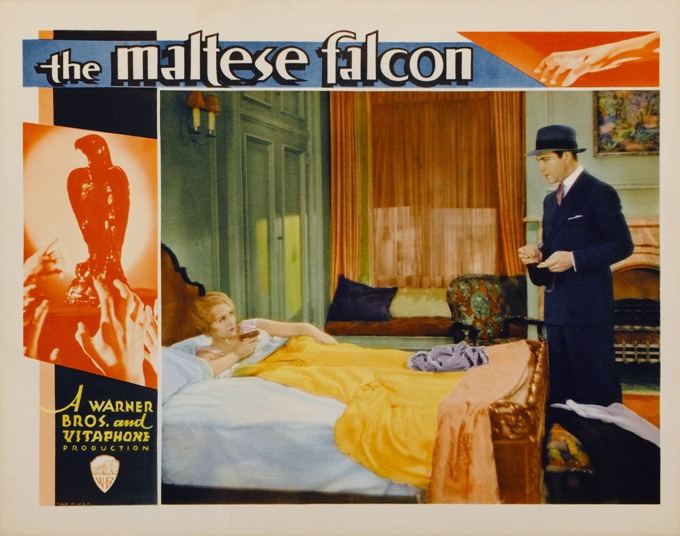
1931 version unknown to me - adore the font used and layout of this poster
Casablanca
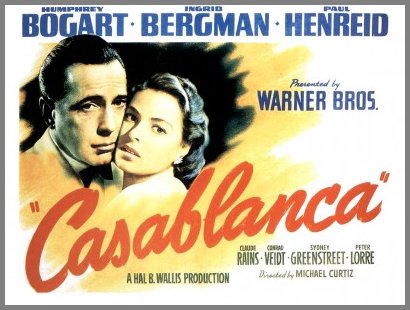
Another of my particular favourites and 2012 sees its 70th Anniversary. There are some glorious moments - the singing of the 'Marseillaise' and strolling of Humphrey Bogart and Claude Rains into the runway lights pondering on the start of their 'beautiful friendship.' Now that's iconic!
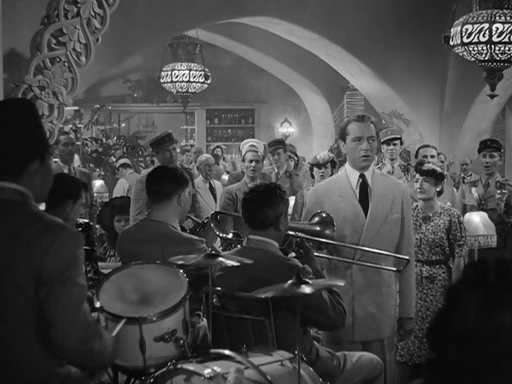
Viktor Laszlo (Paul Heinreid) leading the Marseillaise in defiance of the Nazi Occupation.
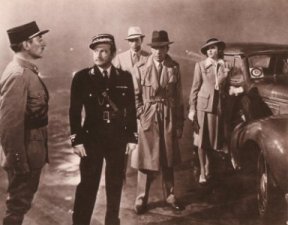
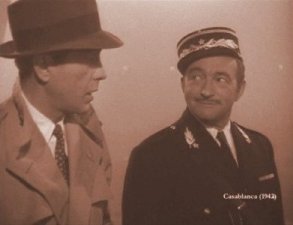
L to R - The films principals at the airport prior to escape Claude Raines, Paul Heinreid, Humphrey Bogart and Ingrid Bergman / Humphrey Bogart and Claude Rains beginning their 'beautiful friendship.'
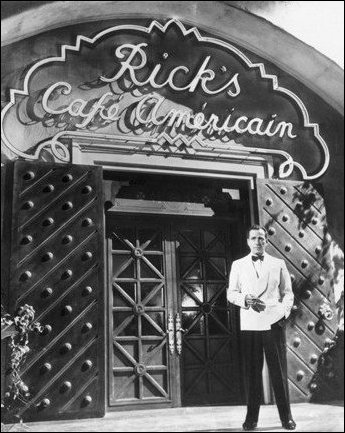
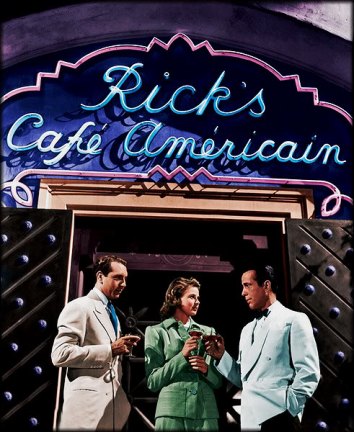
Iconic Rick (Humphrey Bogart) in front of his Café Américaine and joined in a 'colourised' version with (l to r) Paul Heinreid and Ingrid Bergman
And who could forget Sam?
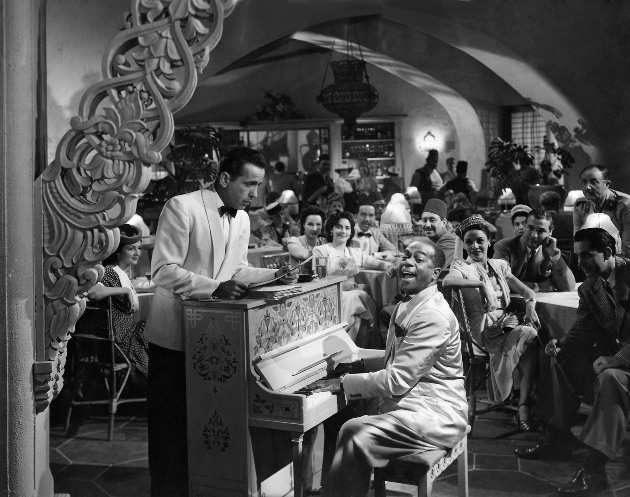
Such a joyous picture of Rick (Humphrey Bogart) and Sam (Dooley Wilson) at the piano
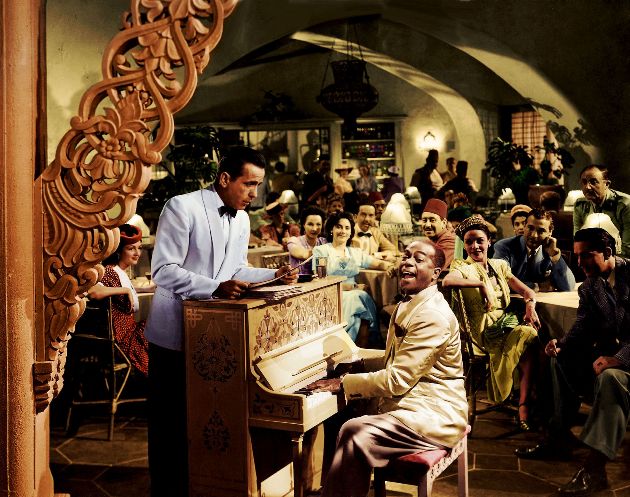
And I couldn't resist sharing the colourised version - what a find!
The Children's Hour

Another of my favourite films - Audrey Hepburn and Shirley MacLaine were superb in this adaptation of Lilian Hellmans stageplay.
Margaret Rutherford's Miss Marple
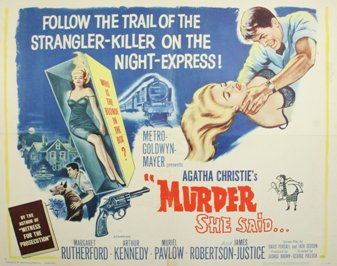
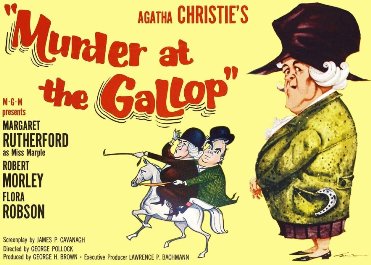

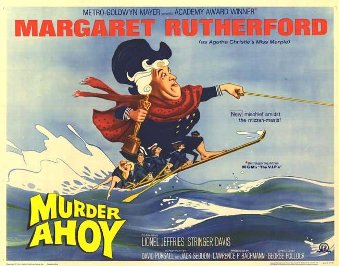
How could the cinema world have survived without the Margaret Rutherford interpretation of Agatha Christie's Miss Marple (with no disrespect to the marvellous Joan Dickson who starred in the television serialisation) - but it very nearly happened! On his website Shadowlocked, Mike Iveson refers to ten (almost) miscastings.
He says "Miscasting in films has always been a problem. A producer hires an actor thinking that he or she is perfect for a movie role only to find the opposite is true. Other times a star is hired for his box office draw but ruins an otherwise good movie because he looks completely out of place." Goes on to say "In rare cases, a miscast actor defies the odds by giving a memorable film performance. Perhaps it was the daunting acting challenge that prompted them to work twice as hard or maybe it was their first starring role and they had to prove themselves worthy of their new found status. Sean Connery was not Ian Fleming’s choice for James Bond and Peter Cushing could not be further from the literary versions of Professor Van Helsing and Baron Frankenstein, but yet they made the roles their own." And includes Margaret Rutherford in the sixth slot stating "Margaret Rutherford (Murder She Said – 1961): It seems a bit of a shame to include this most beloved eccentric of the British cinema, but the fans of Agatha Christie’s amateur sleuth have stated many times that Margaret Rutherford does not fit the description of Miss Marple. Even the author didn’t care much for the actress’ performance. True the film relies more on Rutherford’s dotty persona; but let’s face it, she is, as she was in every film, a delight from start to finish. She is a brilliant Marple because she maintains the character’s razor sharp intelligence and deductive reasoning throughout, dominating every scene with unquestionable authority. And while the film does not follow the original story, it’s a fun ride for all concerned.
On the strength of her performance, Rutherford played Marple in three more movies, and even Agatha Christie dedicated her novel The Mirror Cracked From Side to Side to this most popular of actresses. Rutherford made an uncredited appearance as Marple in The Alphabet Murders (1965), which was intended to be the first of a series of films to feature Christie’s other sleuth Hercule Poirot. But if you want to talk about bad miscastings, you could not do worse than Tony Randal, who is an absolutely atrocious Poirot. Apparently Christie was so horrified at the movie she refused permission for further Poirot novels to be filmed for several years."
The four Miss Marple films made by Margaret Rutherford were:
Murder She Said - 1961
Murder at the Gallop - 1963
Murder Most Foul - 1964
Murder Ahoy - 1964
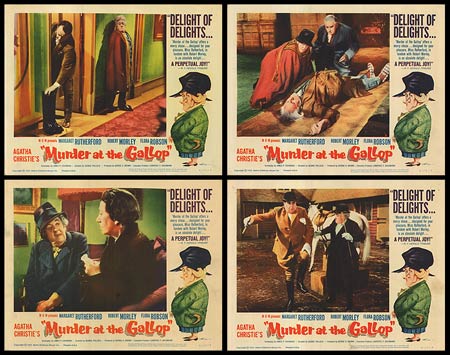
Four alternative posters for the second film 'Murder at the Gallop'

This second film continues to take the lion's share of publicity, possibly because of her co-stars and theatrical giants Flora Robson and Robert Morley
Read about a real-life mystery surrounding Margaret Rutherford here
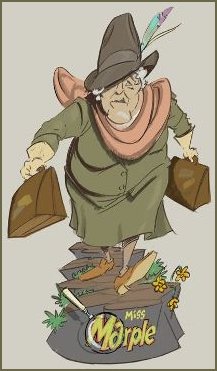
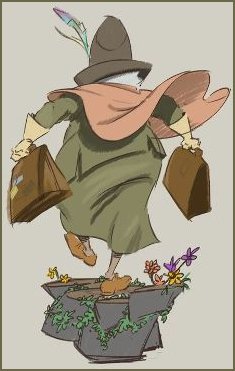
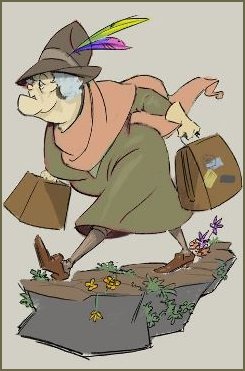
An affectionate rendering of Miss Marple for a project by Paul Hallewell
Changeling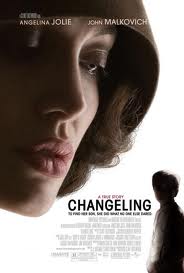
This is a film my sister and I went to see recently and was my choice in the first instance although Marysia had also been interested by the write-ups. I had also seen write-ups and previews and was interested on various planes - this was based on a true story, it had John Malkovich in the cast, not to mention Angelina Jolie and it was set in my favourite decade. I was curious to see how Jolie would handle herself as I haven't seen much of her work but have read much about her tattoos and various relationships. This film reinforced her, to me, as a fine actress and she does indeed have the old-fashioned glamour of a real movie star as well as being a pretty much in your face humanitarian. It's a shame that the film poster seems to focus on one of Angelina's particular assets rather than the storyline, but then the powers that be obviously needed to sell the film as its subject matter is pretty harrowing. The French put together a much more atmospheric poster which can be seen in the sidebar. This was a thought-provoking film which emphasized that in the 1930s women were still very much second class citizens and any single mother was a pariah or mentally defective. We were very impressed with the film and the content sustained our interest throughout.
St. Trinians - the Saga
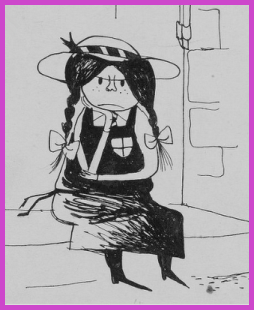
Although I adore the original series, starring Alistair Sim, without reservation and feel they cannot be bettered, the two follow up films made in 2007 and 2009 are worthy successors in an updated manner! And of course there is that fabulous Union Jack (BMW) Mini that makes a spectacular entrance in 'The Legend of Fritton's Gold'.
St. Trinian's the Remake
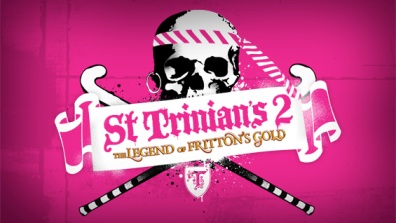
Although this is not the actual film poster it looks like someone had a lot of fun creating the artwork for the second successful film!
The Mini

Not a Classic Mini, a BMW mini - but a mini nevertheless ...... and it did make a great entrance.
Page refreshed : 13th November 2020 (G)
